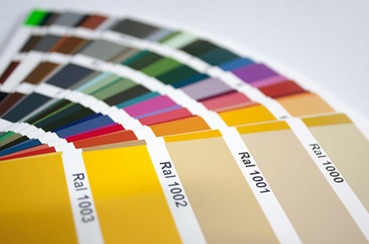
For perfect house painting in Pleasanton, you may want to consider these five smart tips:
1. Prepare the surface
This is probably the smartest tip of them all! No matter how good quality the paint and the tools you buy, if the surface isn’t prepped well you won’t be able to get the finish you’re hoping to achieve.
A surface that’s not cleaned and repaired well will result in adhesion problems for the topcoat. Worse, the surface may wind up with more localized surface problems such as bubbling/blistering, fading paint, peeling and cracking. These surface problems will take time to fix along with extra money for the materials needed to fix them.
Clean the surface well. If you find any small holes, hairline cracks, or any fissures, fill them with good quality filler. For smaller and shallower flaws, use a spackling compound.
Flaking or peeling old paint must not be painted over. It must be scraped off the surface or else the new paint won’t stick well to it. Before scraping the paint, especially if you live in a home built before 1978, it is best to purchase a lead test from your local hardware store or home center. When you’ve confirmed there isn’t lead in the paint, a sharp steel scraper is recommended. After scraping, use sandpaper to smoothen the surface. However, old paint that stays intact does not need to be scraped and can be painted over.
Although a primer can be used only when necessary, more and more people realize the benefits of using it. It helps cover the finer flaws and prepares the surface to receive the topcoat better. There are many types of primer for specific purposes, so if you feel you need to buy one, make sure what kind of surface you’re going to apply the primer on. For instance, wood is one of the more difficult substrates for the topcoat to adhere to — it just absorbs the paint. A regular primer won’t be enough so its better use a wood primer for faster drying and better topcoat adhesion. If you plan to paint a dark surface with a light paint, using a primer is also recommended.
Apply a painter’s tape (and only a painter’s tape) to cover the surfaces you don’t want to paint. Don’t forget to spread out canvas drop clothes on the floor and to cover any furniture that is too large to move.
2. Buy the right type of paint
This is especially true when repainting a surface you’re not sure of the paint type previously used. The paint should be the “right” type of paint. How? Check the surface. Wet a clean rag with a regular rubbing alcohol and rub the surface. If the rag comes out clean, it means that the surface is coated with an oil-based paint and therefore you need to buy a new oil-based paint. But if the rag has stains of paint, then the surface is covered with latex (water-based paint) and therefore you need a similar paint.
You are also faced not just with countless choices of paint colors, but you are also faced with the type of paint finishes to choose from. That depends on the areas of your home. If you plan to paint high-traffic, humidity-prone areas such as the kitchen or an entryway, paint with a glossy finish is recommended. But for other rooms like bedrooms or the living room you can paint with a flat finish.
3. Paint the ceiling
To add more character and interest to your space, paint the ceiling. You should go by the “8 feet rule” to guide you in this task. If the ceiling is lower than 8 feet, paint it 2 shades lighter than the wall paint color to make the space appear spacious and bright. If the ceiling is 8 feet or higher, paint it 2 shades darker to give the room the illusion of a narrow space.
4. Follow the proper painting order
To avoid painting mistakes; you should follow the proper order of operations:
- First – Clean the baseboards and then dust off the corners of the ceiling. Repair any surface flaws.
- Second – Tape the areas you don’t want to paint with a painter’s tape.
- Third – Cover the floor with drop cloths.
- Fourth – “Cut” corners and edges of the walls.
- Fifth – Paint the ceiling first, then the walls, and finally the trim.
5. Use a bucket with a paint grid
If you want to save time but still want a smooth paint finish, skip the paint tray and go for a five-gallon bucket and a paint grid (also called roller screen). It facilitates rolling the paint on the surface as well as saves you time.
DIY-ers may want to consider these five smart tips to make their house painting in Pleasanton fuss-free and more professional-looking.

